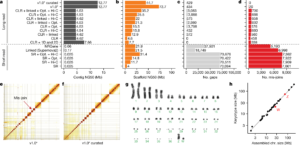Bribery and corruption concerns should be identified as part of your company’s social responsibility, and they may be included in your basic risk assessment. Nonetheless, the volume of data must correspond to the degree of the danger. Bribery and corruption are more common in the construction industry, particularly inside big corporations and throughout the supply chain. There is a lot of law related to anti-bribery and corruption risk assessments, and knowing this might help you build your evaluation to cover all the bases. Under the Bribery Act, individuals can face up to 10 years in prison and an infinite punishment, while businesses can face an unlimited fine.
Establishing an Anti-Bribery and Corruption Risk Assessment Strategy
Companies should make it transparent that they will not tolerate corruption or bribery. Companies may demonstrate their commitment to combatting crime and corruption both internally and globally by developing an anti-bribery and corruption plan. This not only creates a baseline for what is and is not acceptable for personnel on a project, but it also demonstrates the construction company’s intention to respect the law and contribute to the battle against bribery and corruption in the industry.
According to the Anti Bribery Risk Assessment Template, firms may benefit from choosing a senior counter-corruption champion to promote anti-bribery and corruption themes in the workplace. Your whole team should be cautious of the strategy and their tasks; having a point of contact who is particularly informed about the company’s anti-bribery and corruption risk assessment may aid in providing guidance and enforcing the rules.
According to the Bribery and Corruption Assessment Template, bribery is defined as “the offering, promising, agreeing to receive, or delivering of monetary or other incentives to induce or reward illicit functions or acts, and the requestor acceptance of such a benefit.”
How to Assess the Bribery Threat
According to the Bribery Act of 2010, the following are some of the most commonly observed dangers:
- Danger to the country
- Sectoral Risks
- Transactional Risk
- There’s a chance you’ll miss out on a lucrative business opportunity.
- Business Partnership Risks
If you base your anti-bribery and corruption risk assessment on this statute, you will get a thorough overview of these topics. While some are more applicable to specific industries than others, most will apply to construction companies.
The Malaysian Anti-Corruption Commission Act 2009 (MACC Act) was amended on June 1, 2020, to incorporate corporate liability for bribery and corruption under Section 17A.
The MACC Section 17(A) Act is enforced to fulfill international responsibilities under Article 26 of the UNCAC, which deals with legal liability. The MACC Act currently focuses mainly on pursuing people involved in corruption. Section 17A was enacted to make it possible for organizations engaged in corruption activities to be prosecuted. Unless appropriate safeguards can be established, those associated with the organizations will be deemed to have committed the same crime.
The Key Characteristics of Section 17A
The MACC Act’s Section 17A makes it illegal for a company to participate in corruption-related acts that profit the company. According to Section 17A, a commercial company commits a felony whenever a person associated with it corruptly delivers, proposes, or promises any gratification to any person to earn or keep business or a business benefit for the commercial organization (1).
With the adoption of Section 17A next year, the following will be possible:
- The organizations/companies for which these persons work will be held liable if they fail to prevent corrupt behavior.
- The corrupt behaviors of ordinary workers will impact their organizations/companies.




